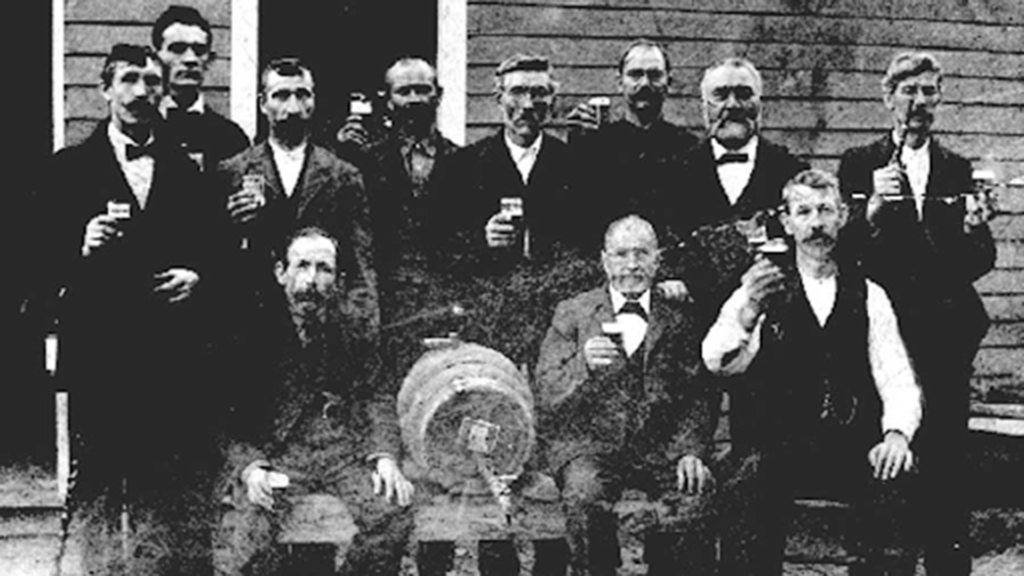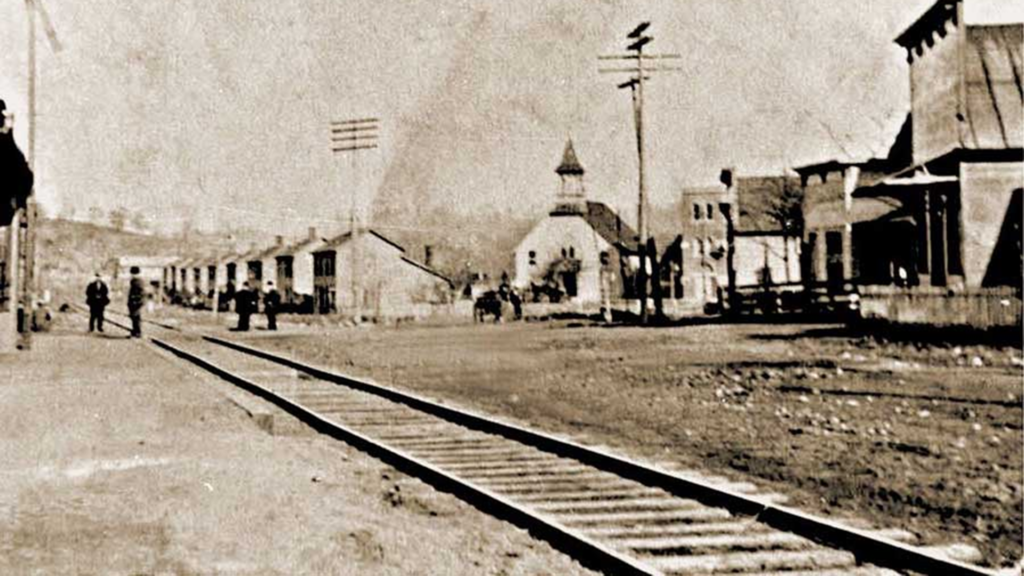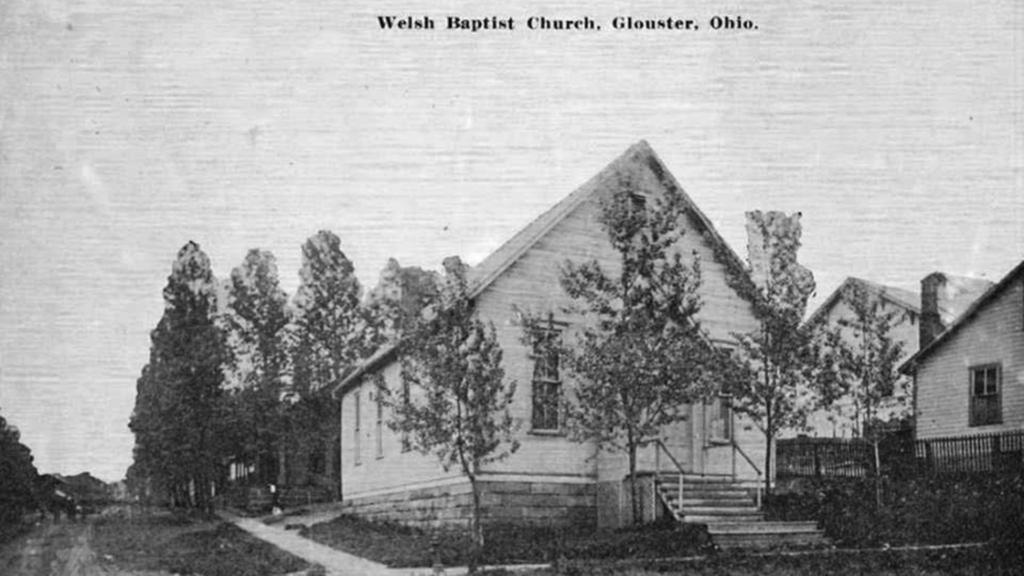THREE STORIES OF
NATIONAL SIGNIFICANCE
How the Little Cities of Black Diamonds affected American history through labor, immigration, and conservation.
Little Cities of Black Diamonds
How the Little Cities of Black Diamonds affected American history through labor, immigration, and conservation.



THE TIMELESS, TRANSFORMATIVE TRIAD
Located in the center of Ohio’s only National Forest, the Little Cities of Black Diamonds (LCBD) microregion has a rich and vibrant past. The historical past that creates the LCBD narrative serves as a beacon of understanding three foundational themes found throughout United States history. The historical themes of labor, conservation, and immigration provide early examples of movements that played a defining role in our nation’s history. Embedded throughout the communities of the LCBD microregion and surrounding landscapes are physical reminders that speak to the LCBD region as a geographical center where these historical movements all intertwine and unfold together. We invite you to explore our rich tapestry of history, our nationally renowned architecture, and the bountiful natural beauty that encompasses the surrounding communities, hills, and valleys that make the LCBD region unlike any other in Ohio.
THE GENESIS OF THE UNITED STATES LABOR MOVEMENT
As a result of the Hocking Valley Coal Boom (1870-1925), the LCBD region played a significant role in the early years of the United States Labor Movement. Due in large part to the Hocking Valley coal boom of the 1870s-1920s, this led to a large influx of miners into the region. This area was at the geographic center of coal booms occurring in southern Indiana, western Pennsylvania, eastern Kentucky, and West Virginia. Coupled with unsafe working conditions, depressed wages, and inadequate housing, many labor organizations formed in and around the LCBD region as a result. The Knights of Labor (KOL) was the first major labor union in America, having been founded in 1869. Two of the oldest KOL Chapters were founded during the Hocking Valley Coal Boom, the first being in New Straitsville, while the second being founded in neighboring Shawnee. “An injury to one is a concern to all” and “labor was the first capital” were two guiding principles that illustrate the KOL philosophy of giving autonomy and power to those who made a living with their hands. As the LCBD region quickly became the geographic center of the labor movement, the region became a hotbed for influential labor organizers to emerge on the scene, helping to fundamentally alter the course of labor history and America’s relationship with work. The LCBD region gave rise to several notable union organizers including Christopher Evans, chief architect of the UMWA, Richard L. Davis, responsible for registering 20,000 African Americans with the UMWA, William T. Lewis, father of the “Ohio Plan ” William H. Bailey, and T.L Lewis, President of the UWMA in 1910. The KOL, coupled with the National Trade Assembly movement, would play an instrumental role in helping lead to the formation of the United Mine Workers of America in 1890 at Robinson’s Cave, located in New Straitsville. The UMWA became the most influential labor organization in the half of the 20th century.
A RESILIENT REPOSITORY OF RESPITE
Located in the heart of the Wayne National Forest, the LCBD microregion is engulfed by a vibrant, second-growth, mixed hardwood forest. However, the natural landscape shaping the region has not always appeared this way. Pioneers started to settle the area in the mid-1800s, to take advantage of the abundance of the natural resources in the Hocking Valley. Soon after, the Hocking Valley coal boom of the 1870s led to clear-cutting large swaths of old-growth forest. Entire hillsides were cleared to fuel the coal boom and burgeoning timber industries that would catalyze American into the dawn of the 20th century. Southeast Ohio’s once forested hillsides were now scarred, barren, and eroded. In order to spur modernization, the natural landscape of the Hocking Valley was pillaged. As the Great Depression hit Ohio’s Hill Country especially hard, the United States government began buying up sub-marginal and flooded out farmland to begin the process of establishing the Wayne National Forest. The Civilian Conservation Corps played a large role in restoring the land as many pine plantations now appear, helping stabilize and replenish the soil. Many community groups lent a hand to help plant trees throughout the area. Tecumseh Lake is a prime example of a community coming together to help turn the site of the former XX Mine into a center for outdoor recreation. Today our region is a proud outdoor recreational destination that represents a more sustainable and place-based way forward. The LCBD region is the proud home of the Buckeye Trail Association, the state’s flagship trail, and hiking experience. The Baileys Trail System, comprising lands that were once mined and home to Baileys Mine #25, now will constitute the largest mountain bike trail upon completion in the eastern United States. The LCBD Council is proud to have an abundance of public land dotting our region and is a proud partner with local conservation organizations to help tell the story of our resilient landscape.
A MOSAIC OF AMERICA
The Hocking Valley Coal Boom brought in a plethora of ethnically diverse immigrants to work in the mines scattered throughout the hills and valleys in our region. Immigrants, first working in southwestern Pennsylvania and the Hanging Rock region in Ohio, quickly made their way to the coalfields in the LCBD region. Coal companies would send representatives to eastern European countries to help recruit men to ensure companies would have an adequate labor supply to fill labor demands. The Welsh had a large presence in the region, in part because many Welsh immigrants already had prior coal mining experience back home in Wales. Scots, Irish, English, Germans, Italians, and Hungarians, would soon find their way to hollows of the Hocking Valley. Interestingly, these new immigrants faced immediate skepticism, as many natives distrusted their new neighbors, as they saw the arrival of new immigrants as a threat to their economic livelihoods. Further illustrating this skepticism, immigrants settled the hillsides surrounding various communities; Welsh Hill, Scotch Hill, New England Hill, and Italyville in Shawnee quickly sprung up. Buchtel had Hungarian Row. Corning was home to a Germanbeer drinking club in the 1910s. Eastern Europeans also quickly settled in with African Americans in communities such as Rendville and Paynes Crossing. Over time, these new immigrants became accepted into the community. For example, The KOL Opera House and Tecumseh Theater in Shawnee held Bobby Burns Society dances and Eisteddfods as a way to reflect the importance immigrants placed in celebrating their native lineage and as a way to celebrate their culture, traditions, and identity. The Hocking Valley Coal Boom provided new immigrants an opportunity to seek out a better life and in doing so they brought their own unique culture and values with them helping to shape and influence American culture. Immigrants helped to fuel America into the 20th century and play a key role in our regions history, but also the history of Appalachia more broadly. Cultural contributions from nearly every Eastern European ethnic group coalesced together to create a cultural mosaic in the Hocking Valley that is distinctly unique, but beautifully American.
our funds help us keep local programming going all year long